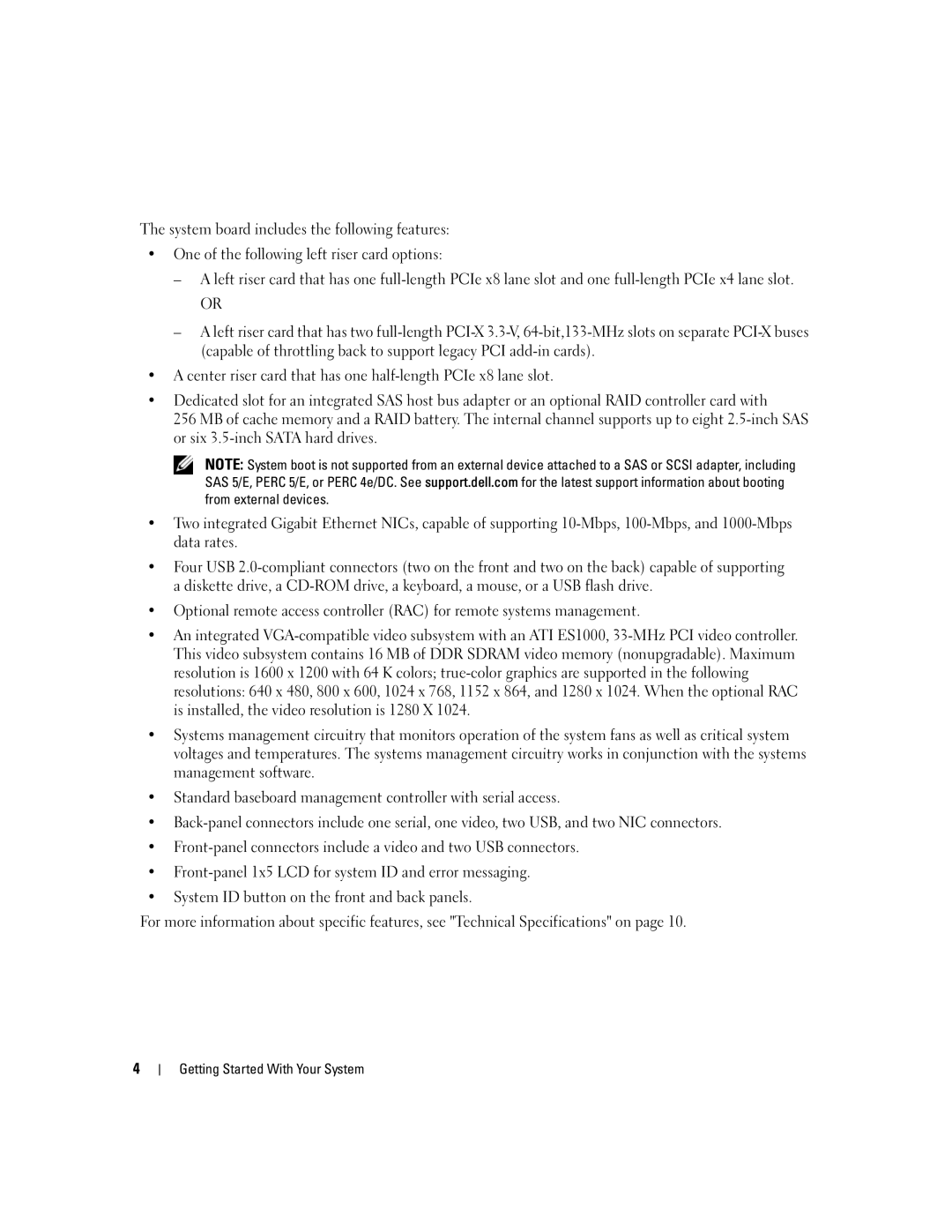EMS01 specifications
The Dell EMS01 is a standout in the realm of enterprise-grade computing systems, showcasing Dell's commitment to delivering high-performance solutions tailored for demanding business environments. This system is a prime choice for organizations seeking reliability, scalability, and advanced technology integration.One of the main features of the Dell EMS01 is its robust processing capability. It is equipped with powerful multi-core processors that ensure efficient multitasking, enabling businesses to run complex applications and services seamlessly. With options ranging from Intel Xeon to the latest AMD Ryzen processors, users have the flexibility to select a configuration that best suits their specific workload demands.
Memory capacity is another defining characteristic of the Dell EMS01. With support for large DDR4 RAM capacities, it can handle extensive data operations and high-performance applications with ease. This level of memory scalability ensures that enterprises can expand their systems as their data processing needs grow, making the EMS01 a future-proof investment.
Storage is critical in any enterprise solution, and the EMS01 does not disappoint. It comes with a variety of storage options, including high-speed SSDs and high-capacity HDDs, which can be configured in RAID for improved performance and data redundancy. This flexibility allows businesses to tailor their storage solutions based on performance needs and budget constraints.
In terms of connectivity, the Dell EMS01 features advanced networking technologies, including support for 10GbE network interfaces. This enables rapid data transfer rates and enhances overall network performance, ensuring that businesses remain competitive in an increasingly data-driven world.
The system also emphasizes security, offering a range of built-in features such as TPM (Trusted Platform Module), secure boot, and advanced data encryption options. These measures help safeguard sensitive information and streamline compliance with data protection regulations, which is crucial for businesses of all sizes.
Power efficiency is another important aspect of the EMS01. It incorporates advanced power management features that help reduce overall energy consumption, contributing to lower operational costs and a smaller environmental footprint.
With its combination of advanced processing power, scalability, secure storage, and energy-efficient design, the Dell EMS01 stands as a reliable solution for enterprises focused on optimizing their IT infrastructure. It is an investment that not only meets current needs but also offers long-term viability in an ever-evolving technological landscape.
